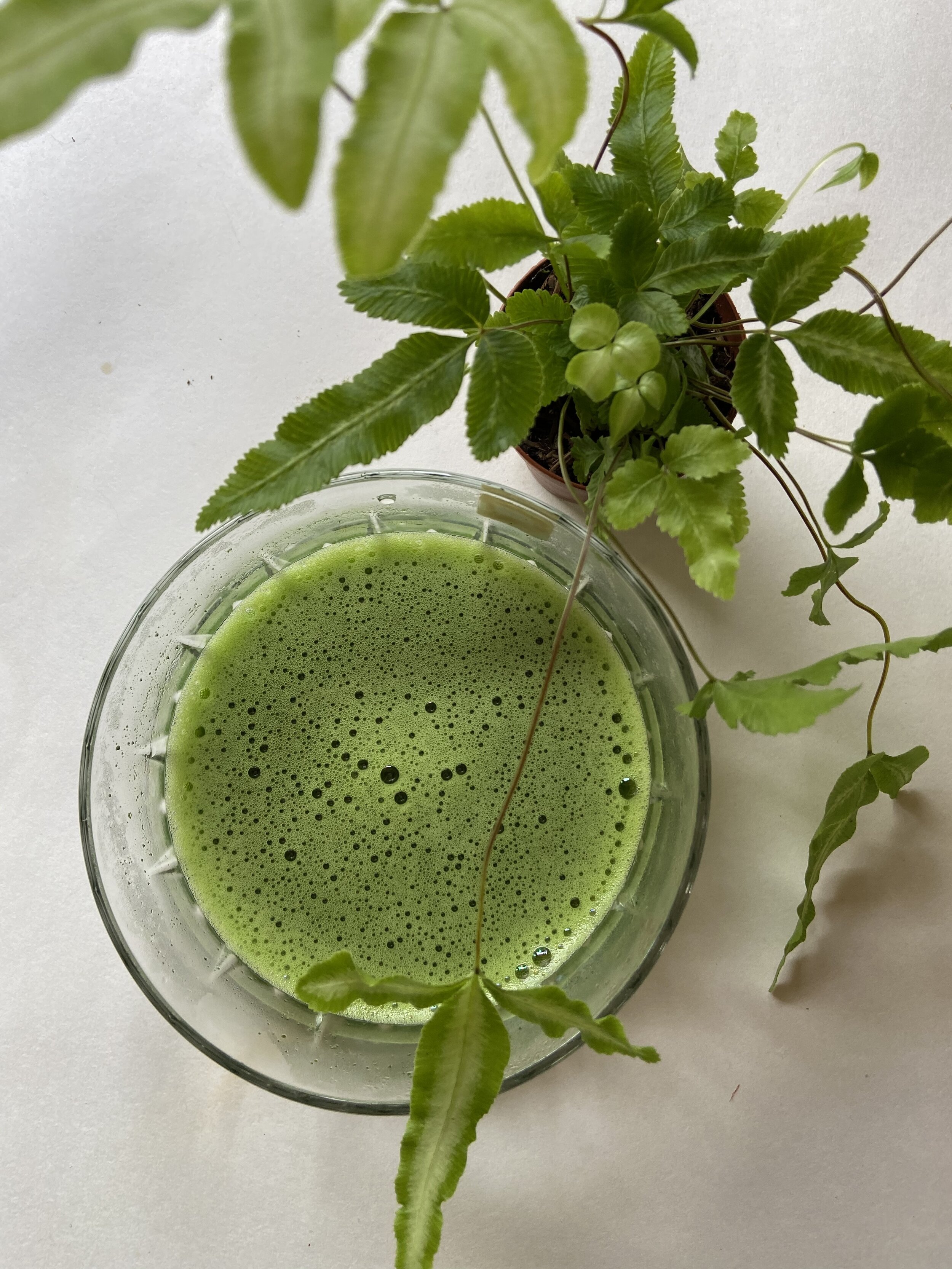
Matcha Tasting “Wheel”
A Vocab Guide For Expressing Matcha Flavor
When I first started reviewing matcha there was a simple focus: do I like this blend or not so much? As I tasted more matcha varieties, the question evolved in complexity; what makes this blend different, what do I like about it, and how would I describe it to someone that has never tasted it before? In need of a more detailed vocabulary to answer these questions, I researched flavor wheels. This was helpful, but I could not find one specific to matcha. Matcha, particularly in its pure form, contains many combinations of flavors that differ from other tea varieties. Tea flavor wheels had too many categories that were useless when reviewing matcha blends, and simultaneously were missing relevant flavor categories such as umami. This dilemma inspired me to create a matcha tasting guide that I am thrilled to share with you. Scroll to the bottom to see it!
To create the matcha flavor guide I had to get in tune with my senses, particularly taste. A lot of the time we eat and drink without thinking too deeply about what we are tasting. Chicken is chicken, cake is cake, and so on, but how does chicken or cake actually taste? To describe flavor we generally need to reference other flavors we already know. Basically, we describe flavor with flavor, and occasionally use scent as a taste descriptor. Identifying the basic tastes first (sweet, salty, bitter, sour, umami) and then expanding within each taste category is a helpful way to start thinking about flavors.
One of the basic and primary tastes of matcha is vegetal flavor. Every matcha blend will have these notes. After all, it is a green plant. Spinach and grassy are the most common descriptors I use for this category. Most blends will also have a bitter component. Bitterness can be a delightful addition when balanced with other basic tastes. However, this same quality can overpower a blend, causing me to shove it in the “thank you but never again” folder. Bitterness and vegetal notes are both commonly found in other foods, making it easier to communicate these flavors.
The most common taste descriptor in matcha advertising is umami. For a Westerner this category can be mysterious and not easily understood. Broth and cheese are some of the more common umami foods in the West, which are hard to identify in liquids such as tea. I find that seaweed and oceanic foods such as oysters are a great comparison for understanding umami in matcha. Once I started to better understand this flavor, I discovered that very few matcha blends possess this quality. Interestingly, it took time to appreciate the flavor of umami. Matcha blends that are truly rich in umami can be very shocking and perplexing at first, and are more of an acquired taste.
The roasted flavor category is not commonly found in tasting wheels, but I felt it was necessary to fully describe matcha blends. Some may argue that roasted notes are part of umami or other basic tastes. To me, this was a distinct flavor profile that deserved its own categorization. When drinking matcha, it is fascinating to pick up toasted notes given that matcha is never roasted or fermented, unlike black teas or coffee. The most common toasted flavor I notice in matcha blends is roasted rice. Have you ever had roasted rice tea? It’s so yummy!
Another common taste in matcha is sweetness. Matcha has no real sugar in it, unless you get a matcha latte or other product with sweetener added. However, matcha does have sweet notes, often hitting the palate at the end of a sip, or the finish. These flavors tend to linger on the palette. A common sweet taste is a creamy or buttery flavor. Like umami, I find that not all blends possess sweetness, but it is a standard for a five star matcha review.
Lastly, I added two uncommon categories to the matcha flavor palette: fruity and floral. These qualities are more likely to be noted in the matcha powder aroma, particularly when opening a new tin. Some unique matcha blends will have floral and fruity tasting notes, but they will likely be minimal. Pineapple sage is one example of how something vegetal can have a fruity scent and flavor.
Depending where you are in your matcha tasting journey, this guide will be of different use to you. As you get better at identifying specific notes, you will get more descriptive and specific in your vocabulary. Learning to taste and describe flavor is a bit like learning to listen to music and identify specific notes played. You develop an ear for it-- in the case of matcha, a taste. I hope this tasting guide can be a helpful starting point for your matcha vocabulary. Would love to hear how your tasting journey is evolving. Feel free to email or message me on Instagram @grassy_notes.

